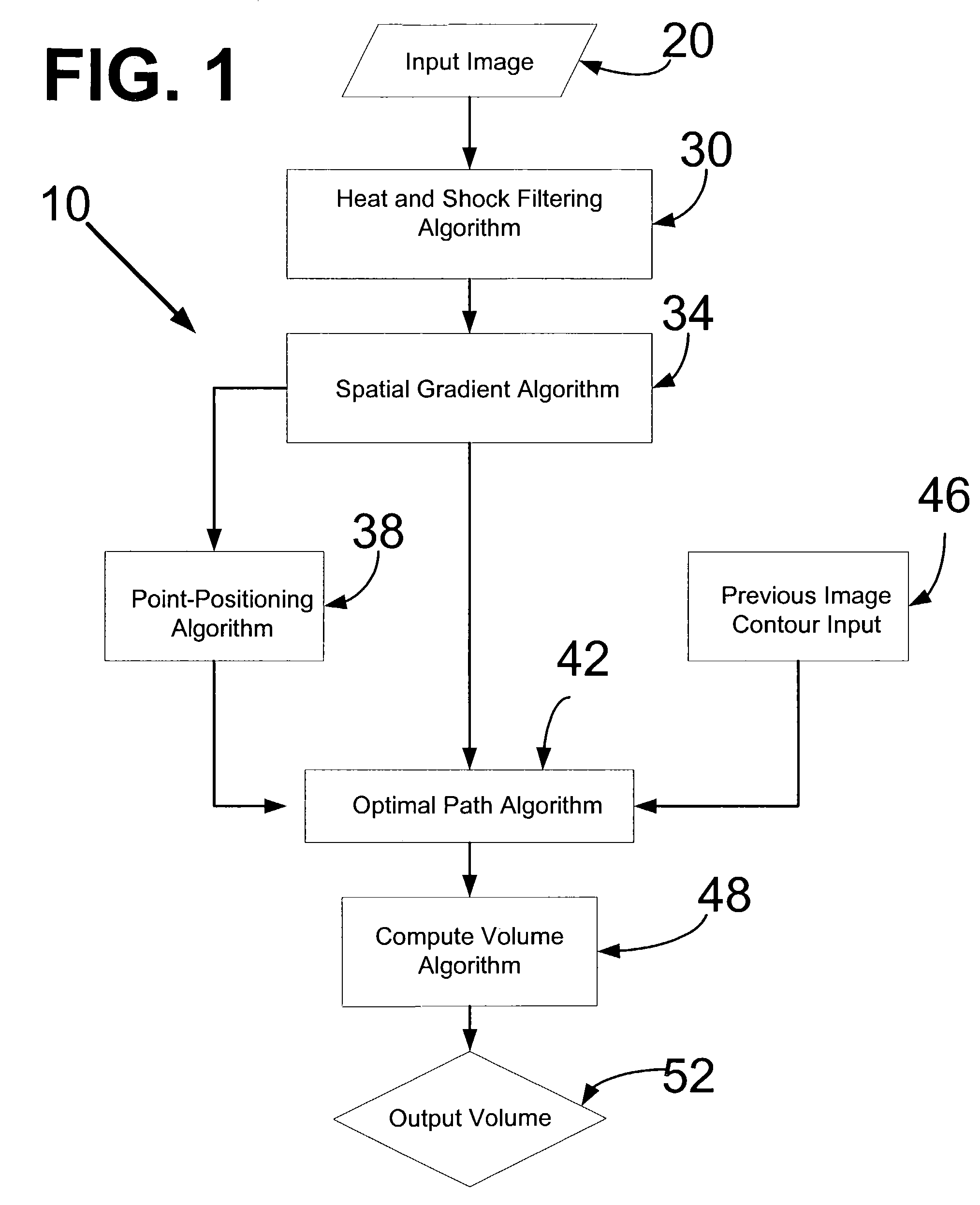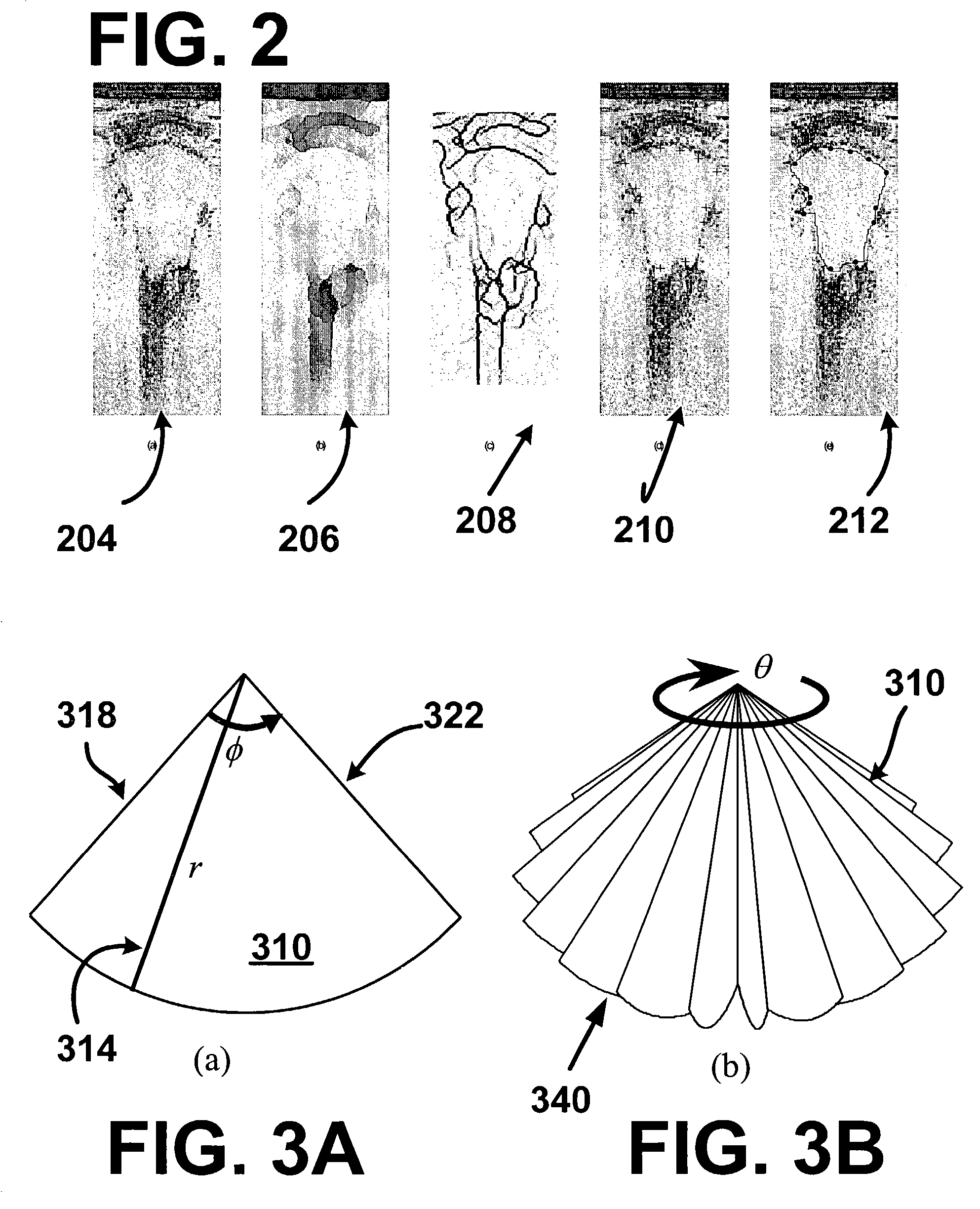Image enhancement and segmentation of structures in 3D ultrasound images for volume measurements
a 3d ultrasound and volume measurement technology, applied in the field of medical imaging, can solve the problems of unsatisfactory shape or size assumptions, and the inability to generalize beyond the application, so as to achieve the effect of robustly locating and measuring
- Summary
- Abstract
- Description
- Claims
- Application Information
AI Technical Summary
Benefits of technology
Problems solved by technology
Method used
Image
Examples
Embodiment Construction
[0028]FIG. 1 shows an overview of a segmentation algorithm 10. The segmentation algorithm 10 begins with the receiving of an input image 20, to which a heat and shock filtering algorithm 30 is applied to the input image 20. Thereafter, a spatial gradient algorithm 34 is applied to the image that has been heat and shock filtered. At this juncture, initial edge points are located in a point-positioning algorithm 38 to the boundary of the organ structure within the image. Thereafter an optimal path algorithm 42 is applied to determine the best path to connect the initial edge points assigned by the point-positioning algorithm 38. This optimal path algorithm 42 also uses the result of the spatial gradient algorithm 34 as an input. For images already having a drawn contour, a previous image contour input 46 is inputted to the optimal path algorithm 42. Thereafter, a compute volume algorithm 48 is applied to the image, and the computed volume is reported as an output volume 52.
[0029]FIG. ...
PUM
 Login to View More
Login to View More Abstract
Description
Claims
Application Information
 Login to View More
Login to View More - R&D
- Intellectual Property
- Life Sciences
- Materials
- Tech Scout
- Unparalleled Data Quality
- Higher Quality Content
- 60% Fewer Hallucinations
Browse by: Latest US Patents, China's latest patents, Technical Efficacy Thesaurus, Application Domain, Technology Topic, Popular Technical Reports.
© 2025 PatSnap. All rights reserved.Legal|Privacy policy|Modern Slavery Act Transparency Statement|Sitemap|About US| Contact US: help@patsnap.com



